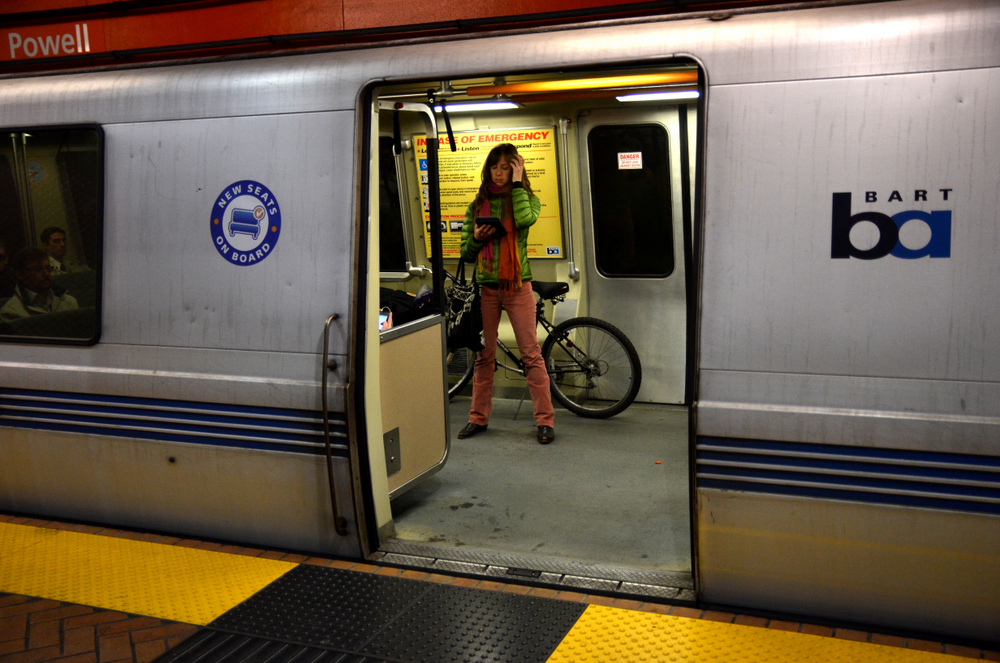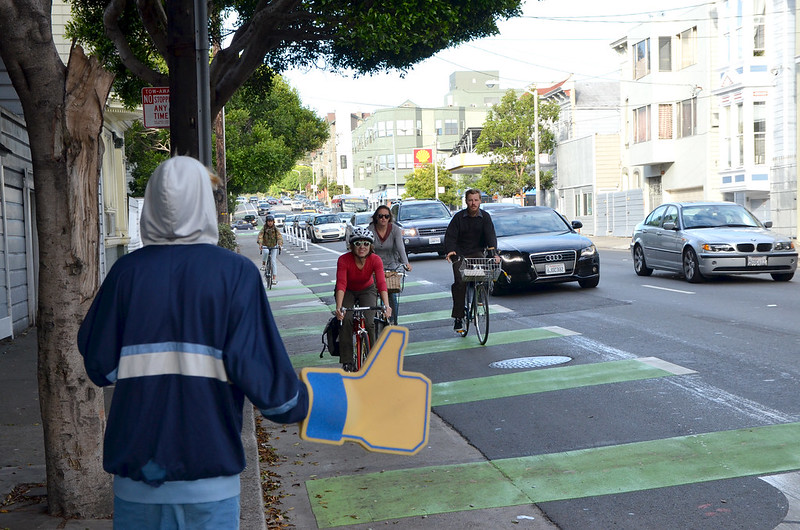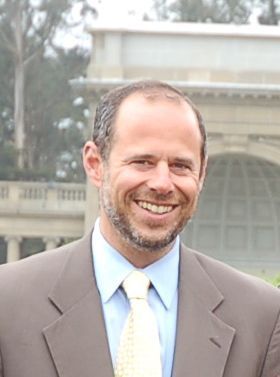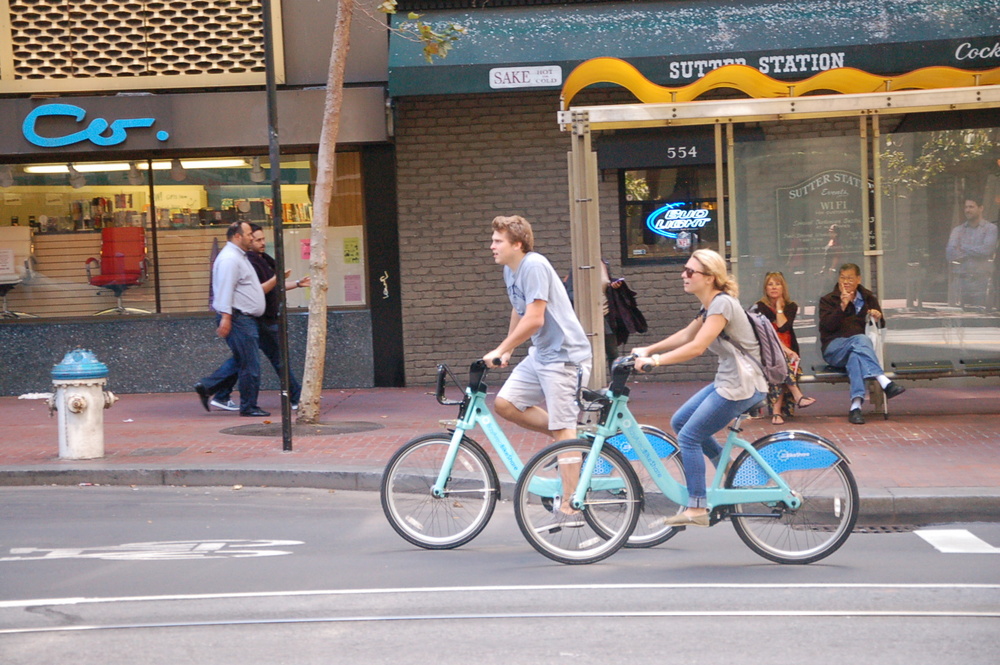The 2013 Streetsie Awards, Part 1
9:06 AM PST on December 31, 2013

Now that the votes are in, it's time to present the 2013 San Francisco Streetsie Awards, Streetsblog's recognition of the year's best and worst in livable streets.
A quick reminder -- if you still haven't contributed to Streetsblog's year-end pledge drive, please make a contribution to keep us going strong in 2014. Support from readers like you allows us to provide reporting and commentary that helps drive momentum for safer streets and sustainable transportation in San Francisco.
And now for the awards.
Best Transportation Improvement
BART's removal of rush-hour bike bans nabbed first place for the year's best transportation improvement, with the launch of Bay Area Bike Share and the Oak Street post-separated bike lane close behind.

BART was way overdue to lift its bike blackouts, and the policy change came in the most wonderfully uneventful way possible. Through a series of trials, BART demonstrated what bike advocates have argued for years -- it's no big deal to allow bike-toting commuters to use their best judgment when boarding. The sky didn't fall, and new doors have opened for Bay Area commuters to get to work without a car. It's one major step BART has taken towards reaching its goal of doubling bike-to-train commuting by 2022.
A close runner-up is Bay Area Bike Share. Now, the fact that it finally launched is great, but San Franciscans really want it to be bigger. Much bigger. We do have a small expansion to look forward to in the next few months, but Peninsula residents' appetite has been whetted, and the overseeing agencies will need to ramp up the growth of the system to meet the demand for this new way of getting around. The silver lining is that the visible public push for more bike-share helped solidify the system's standing as a popular new mode of travel early on.
Tying for second-best transportation improvement is the three-block Oak Street bike lane, which was installed in time for Bike to Work Day. Featuring treatments like green paint, posts separating bike commuters from cars, and even bike traffic signals, this bike lane complements the one on the parallel blocks of Fell Street -- voted 2012's "Best Bike Improvement" -- completing the vital link between the Panhandle and the Wiggle. Already, the SFMTA has found that the bike lanes are yielding promising safety results,
Major credit for the project goes to D5 Supervisor London Breed, who pushed the SFMTA to expedite the installation, as well as the SFMTA engineers who worked their way around the paint shop renovation work that threatened to obstruct the whole thing. Of course, the Fell and Oak bike lanes have seen more than their fair share of delays, and we're still looking forward to pedestrian bulb-outs and landscaped traffic islands in the coming year as city planners tweak their design.

Best Quote From a City Official
At a recent conference of the National Association of City Transportation Officials in New York, SFMTA Director of Transportation Ed Reiskin stated, "The most cost effective investment we can make in moving people in our city is in bicycle infrastructure." That kind of thinking nicely captures why Reiskin has since been named NACTO president.

In his first two-and-a-half years, San Francisco's car-free transpo chief has initiated promising strategies to improve the city's transit, walking, and bicycling networks. So far, though, it's mostly on paper. While those reforms should bear fruit in the future, Reiskin's SFMTA has ratcheted back on projects today, like the Polk Street bike lanes and parking meter installations in the eastern neighborhoods, to appease opponents. That might be part of a larger strategy -- the SFMTA will need voter support for the transportation funding measures proposed for the November 2014 ballot -- but it's not a great precedent for making the bold changes SF needs.
Also, we must note that technically, Reiskin made his "bicycle infrastructure" statement in late 2012, but we didn't find a place for it in last year's Streetsies, and we just had to put it in the ring with the other contenders. Speaking of which, honorable mentions go to:
- Supervisor Jane Kim: "We should treat cars, in many ways, like a weapon. It has the same impact."
- Mayor Ed Lee's Transportation Advisor, Gillian Gillett: "Let’s be San Francisco and take down the freeway."
Best Guide to SF's Transportation Politics
Well, it's probably the only guide to the politics of transportation in San Francisco, but Jason Henderson's Street Fight is an invaluable map of the treacherous landscape of any proposal involving parking, bike lanes, pedestrian space, and Muni. In his book, the SF State University geography professor provides a nuanced explanation of why socially progressive San Francisco can be just as car-centric as the American South when it comes to reallocating street space to improve other options for getting around. Pick it up if you haven't already -- it's essential reading for any sustainable transportation advocate.
Most Inauspicious Sign of the Parking Apocalypse
"YOU DESERVE UNLIMITED FREE PARKING! IT’S NOT FAIR!!! MORE RAGE CAPS!!! THROW yourself on the floor! Spin around! Pitch a TANTRUM! People in cars should never have to compromise or share!"
The anonymous satirist who posted flyers along Masonic Avenue, encapsulating the parking-obsessed vitriol typically marshaled against street safety and transit improvements, gave livable streets advocates one of the best chuckles this year. But it was also chillingly accurate. Hats off to you, whoever you are.
Worst Place to Park Cars
Civil servants parking city vehicles in bus lanes, bike lanes, and wherever else they feel like it is nothing new, but it's worth highlighting the fact that in 2013, in San Francisco, city emblems are basically treated as a license to delay Muni and endanger people walking and biking.
Worst Political Trend: Bad Parking Policy Disguised as Populism

Parking garages in, parking meters out. That's the position espoused lately by Supervisors Mark Farrell, Malia Cohen, and David Campos, who've been fighting parking meters and trying to force developers to trade apartments for car storage, under the pretense that this will make the city more affordable and livable. In fact, nothing could be further from the truth.
More parking in buildings, which Campos and Cohen have pushed for in recent projects, means higher rents, more car ownership, and traffic. Blocking meters, a fight taken up by Farrell and Cohen, prevents the SFMTA from setting prices in response to demand -- the very purpose of the nationally-lauded and successful SFpark program, aimed at reducing needless traffic circling for parking. Unfortunately, this contingent recently persuaded the entire Board of Supervisors to hamstring the SFMTA's ability to install new parking meters in a five-year contract. Pandering to poorly-informed parking warriors isn't a populist cause, it's a short-sighted political gambit that is hurting SF.
Best Legislation for Safer Streets

Turning our attention now to an elected who focuses on effective street improvements, we're pleased to spotlight the potentially life-saving legislation proposed by Supervisor Scott Wiener, who won a Streetsie last year for being City Hall's most active transportation reformer. In June, the Board of Supes unanimously passed Wiener's package of bills designed to cut through some of the bureaucratic red tape that inhibits pedestrian safety projects. The legislation would streamline the addition of sidewalk bulb-outs and require city agencies to better coordinate their street upgrades.
Bonus kudos to Wiener for his campaign to bring attention to the consequences of rampant double parking.
Quickest Show of Action on Safer Streets
The SFMTA's Livable Streets subdivision deserves recognition for the swift installation of the buffered bike lane Folsom Street in SoMa. By implementing a pilot project to convert a traffic lane into a wider bike lane, the team showed what the agency can do when resources are focused on making safety improvements happen promptly. The bike lane may not be ideal -- it's not protected like the broader two-way bikeway plan undergoing environmental review -- but the SFMTA responded to calls for safer streets by working around bureaucratic barriers to reduce the typical years-long timeline to just a couple months. In this case, the pressure was sparked by the death of 24-year-old Amelie Le Moullac, who was killed on her bike by a truck driver at Folsom and Sixth Streets.
Stay tuned for more on the Le Moullac story in part two of the 2013 Streetsies, coming tomorrow.

Stay in touch
Sign up for our free newsletter
More from Streetsblog San Francisco
Streetsblog SF editor Roger Rudick offers constructive criticism of Chicago’s downtown bike network
"There were blocks that felt very safe and very secure," he said. "But then you're immediately – voom! – disgorged into three lanes of moving traffic with no protection."
Commentary: There is Zero Ambiguity to the West Portal Tragedy
What happened in West Portal was entirely predictable and preventable. The city must now close Ulloa to through traffic and make sure it can never happen again





